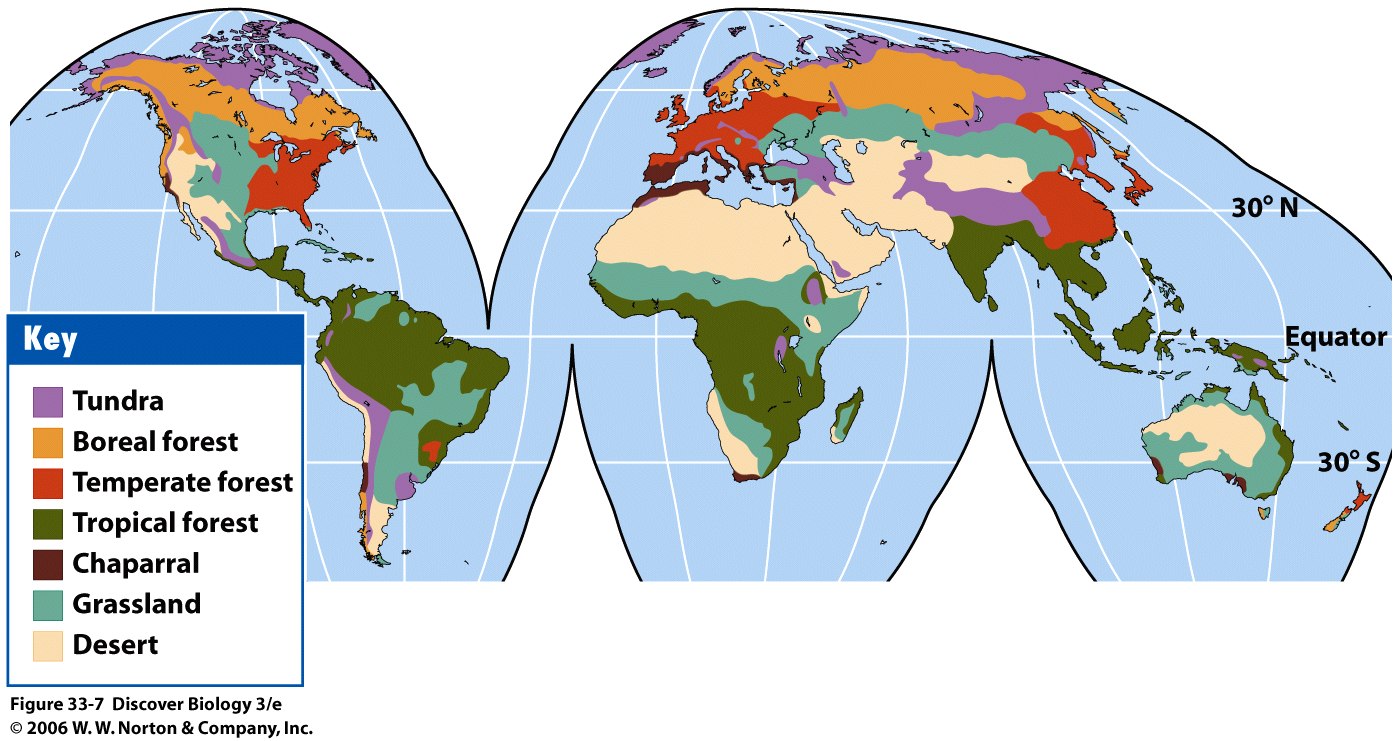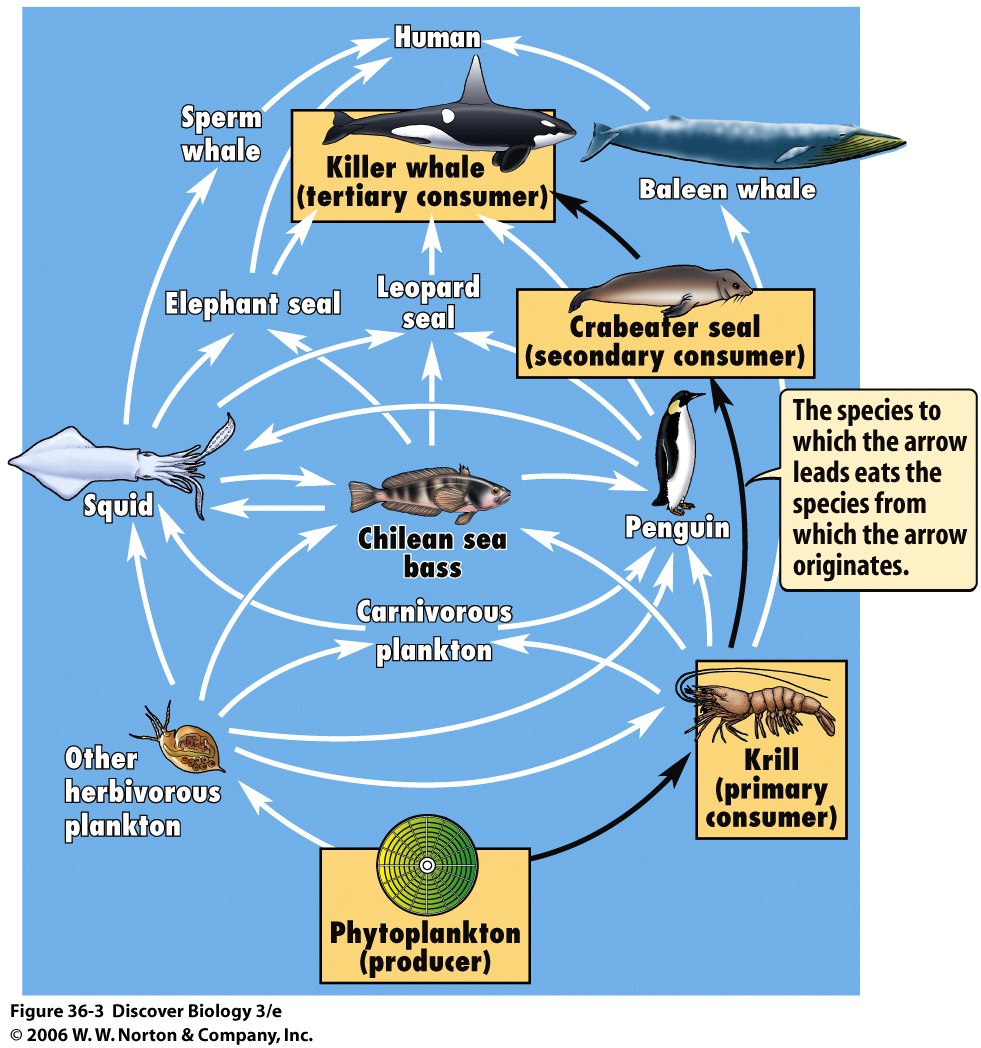BIO 7: Lecture 24 Preview
Ecology: branch of biology studying interactions between living and non-living things
Ecology is studied at different levels: individual, population, community, ecosystem, biosphere (these pictures are from a different text).
Understanding interactions may help in the removal and/or preservation of species in different areas of the biosphere.
Biomes are different kinds of ecosystems (your text calls them life zones), are associated with different physical conditions, and include different kinds of communities that have become adapted to those physical conditions and each other.


Populations are individuals of the same species, living and interacting in an area.
How fast a population grows (population growth rate) is affected by the environment as well as the life cycle times of the species.
Population growth rate (r) = gains in the pop. - losses in the pop. in a certain time period
= [birth rate (b) + immigration rate] - [death rate (d) + emigration rate],
where b = # individuals born in a given time period and d = # individuals dying in that same time period
immigration = # individuals moving into the population and emigration = # individuals leaving the population.
Most natural populations are capable of rapid growth, called exponential growth, where the increase is proportionate to the existing population and produces J-shaped growth curves.

Limited physical resources + interactions among living things do not allow endless exponential population growth.

Carrying capacity = the maximum # of individuals that an environment can support.


Community Interactions = relationships between different populations in the same location
| Type of Interaction | One participant and | the Other participant |
| CONSUMER/VICTIM | gains (predator, parasite, herbivore) | is harmed (prey or host) |
| MUTUALISM | gains | gains |
| COMPETITION | is harmed | is harmed |
Common Mutualistic Relationships: How does each partner benefit?
| RELATIONSHIP | WHAT ONE GAINS | WHAT THE OTHER GAINS |
| Animals eating fruit | ||
| Animals pollinating flowers | ||
| Fungi (mycorrhizae) in roots of plants |
Competition is a form of interaction between species where both are trying to use limited resources in the same area.
Competition has different possible outcomes. (Pictures are from another text.)
Populations in the same habitat and using the same resources may occupy different niches.
Feeding relationships in a community are represented as organisms occupying trophic levels in a food chain. (Pictures from a different text.)
A more realistic view is that organisms have feeding interactions in a food web, with many interconnected food chains.

Communities are most productive and probably most stable when there is a lot of biodiversity.
Biodiversity is high when there is a lot of genetic variation within species, a lot of different species in the community, and a large area for the community to live in.
Why does that make sense when you look at a food web and consider community interactions?